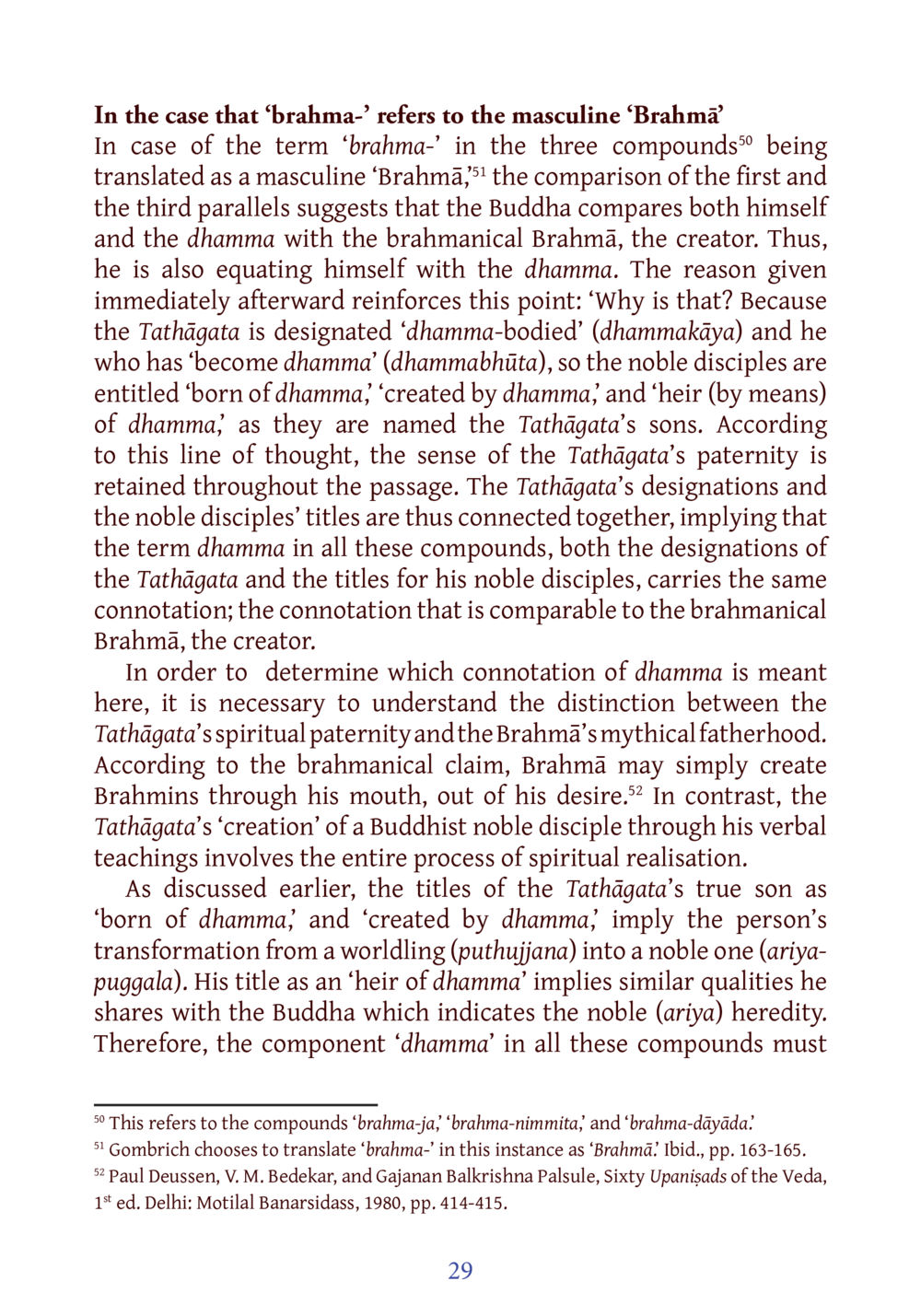Understanding the Connotation of Dhamma in Relation to Brahma : หน้า 50/141
DIRI Journal : หน้า 50/141 Explore the comparison between the Tathāgata and Brahminical Brahma, focusing on the spiritual significance of dhamma in Buddhism.
16 ครั้ง

สรุปเนื้อหา
In this text, the term 'brahma-' is analyzed in the context of its translation as the masculine 'Brahma.' It discusses how the comparison between the Tathāgata and the Brahma, the creator, illustrates spiritual concepts in Buddhism. The Tathāgata is described as ‘dhamma-bodied’ and ‘the one who has become dhamma,’ establishing a connection with his noble disciples, who are seen as 'born of dhamma' and 'heirs of dhamma.' This reflects a transformation from a worldling to a noble individual, emphasizing the difference between Brahma's role in creation and the Tathāgata's teachings. The essence of dhamma shared among the Tathāgata and his followers signifies a noble heritage.
หัวข้อประเด็น
-Comparison of Tathāgata and Brahma
-Spiritual paternity in Buddhism
-Significance of dhamma in Buddhist identity
-Transformation from worldling to noble disciple
-Distinction between mythological and spiritual fatherhood
ข้อความต้นฉบับในหน้า
หน้าหนังสือทั้งหมด













































































































































